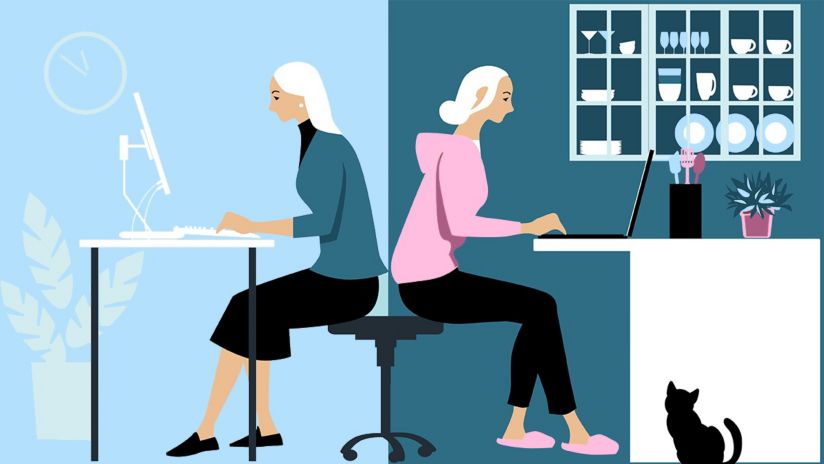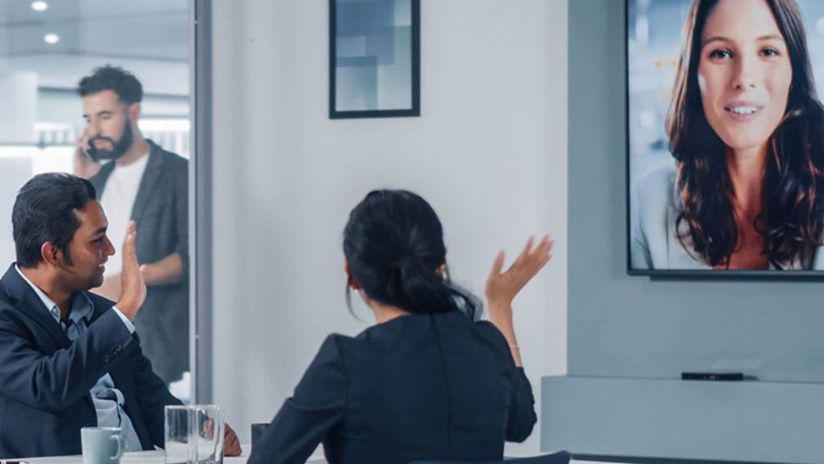Hybrid working at Telstra; the meeting room features that matter to our teams

When Telstra staff had to move to fulltime remote working back in 2020, all meetings were suddenly held via Teams or Webex. As both platforms released improved features, Telstra employees were quick to adopt them. We took advantage of screen share, uploaded documents to a channel, gave presenters a virtual round of applause, turned on virtual backgrounds, split off into breakout rooms, used whiteboards, unmuted ourselves when the “you’re muted” notification reminded us that we were on mute, and recorded meetings for those who couldn’t attend. In the past few weeks, we have even created our own avatars. It’s safe to say that when it comes to remote meetings, we’re embracing virtual meeting room technology and we’re more productive as a result.
Today, a growing number of individuals are choosing to come into the office again and are seeing the benefits in doing so. Working at the office allows Marisa, a marketing chapter lead in Sydney, to engage in conversations outside of meetings and allows her to get to know people on a more personal level. Commercial chapter lead, David, comes into the office for similar reasons, finding it more effective to build relationships with team members in-person. David observed that good ideas and enhanced critical thinking frequently came through casual "watercooler" encounters that can only occur in a face-to-face context. He also noticed that in the office, decision making timeframes are shorter – you’re able to stop by someone’s desk for five minutes, rather than having to reach them virtually – which can mean emails back and forth with wait time between, scheduling and holding a specific meeting or finding availability for a call.
Eric, a senior sales specialist is very happy with his at home set up but likes to come into the office for networking with the team or customer meetings. Nhu, in marketing, comes into the Melbourne office for collaborative workshops, to connect on a social level with colleagues and to network with people in other parts of the business that she wouldn’t cross paths with otherwise. David, who works with the commercial chapter in Sydney, enjoys the seamless tech and collaborative spaces in the office, as well as the ability to catch up and work with people at their desks outside of meetings.
With Telstra employees adopting a mix of remote work and in-office workdays, we’ve had to adjust to a hybrid meeting style and are conscious of the role that our meeting room and at home technology plays in enabling those meetings to be smooth and productive.
Prior to Covid, Telstra staff worked predominantly in the office and smaller working meetings were held in a physical meeting room. This meant that if someone needed to join remotely, they were the minority. Due to the meeting room set up, remote participants would often miss out on seeing or hearing all parts of the meeting or presentation. Covid was a game-changer since it made everyone's meeting experience practically equal regardless of where they were located. It also meant we didn’t necessarily need to create working groups based on geographical location and we started working more closely and meeting more often with interstate colleagues.
Whilst this has been fantastic from a skills, resourcing, and networking perspective, it now means that even if everyone chose to come into the office for a meeting, we wouldn’t necessarily be in the same office and able to meet face-to face. Regardless of whether the in-office employees or the remote working employees make up the majority of meeting attendees – all individuals need to have an equal meeting experience. The technology and set up of our meeting rooms has had to evolve to cater for this.
Quality and fit for purpose Audio Visual and Video Conferencing solutions in meeting rooms are crucial for productive meetings, especially for hybrid working teams like ours. Ruben, who works in marketing, visits the Sydney office a few times a week. When he's working from home and dialling in for a meeting with colleagues who are in the office, having a proper microphone or moving camera in the meeting room is essential, so he can properly hear and see what's going on and who's talking. If someone in the room is using a whiteboard, as a dial-in participant, he needs to be able to properly see that as well. Similarly, it’s important that those joining a hybrid meeting from an in-office meeting room aren’t missing out on any of the virtual components of the meeting. Commercial chapter lead, David, noted that if there’s a robust conversation happening on the Teams chat, the in-person attendees should be able to see and interact with that as well. When Marisa’s sitting in a meeting room, she’ll still dial into the meeting from her laptop so that she can interact in any online activity including a Miro board, the Teams chat or saving screen shots from the shared presentation, as she might have done if joining from home.
We asked several Telstra employees which meeting room elements make a big difference to them when it comes to being in the office or dialling in to a hybrid meeting – their top answers were:
- MS Teams functionality in all rooms
- A good connection to internet /access to ethernet cables
- Laptop chargers in the meeting rooms
- Large screen to share content on
- Whiteboard
- Clear microphone or moving camera
- Easy way to share screen content
Is it time to optimise your meeting rooms? If you'd like to talk to a workplace specialist about optimising your meeting rooms, request a call back today.


